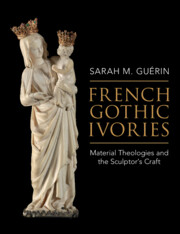Refine search
Actions for selected content:
23 results
Chapter 10 - Epiphany
- from Part II - Beliefs and Practices
-
-
- Book:
- Personal Religion in the Ancient Greek World
- Published online:
- 25 November 2025
- Print publication:
- 11 December 2025, pp 232-250
-
- Chapter
- Export citation
Chapter 6 - Pompai and the Mechanics of Sacred Occasion
- from Part II - Technologies and Ritual Experience
-
- Book:
- Technologies of the Marvellous in Ancient Greek Religion
- Published online:
- 04 September 2025
- Print publication:
- 24 July 2025, pp 185-212
-
- Chapter
-
- You have access
- Open access
- HTML
- Export citation
Ritual and the Enemy Body: A New Approach to Modern Atrocity
-
- Journal:
- Comparative Studies in Society and History / Volume 67 / Issue 4 / October 2025
- Published online by Cambridge University Press:
- 24 March 2025, pp. 735-760
-
- Article
-
- You have access
- Open access
- HTML
- Export citation
7 - Rites of Marriage
- from Part III - Marriage Rites in Byzantine Liturgical Manuscripts
-
- Book:
- Marriage in Byzantium
- Published online:
- 01 May 2025
- Print publication:
- 23 January 2025, pp 241-309
-
- Chapter
- Export citation
2 - Early Christian Weddings in the Eastern Mediterranean
- from Part I - The Christianization of Ancient Marriage Ritual
-
- Book:
- Marriage in Byzantium
- Published online:
- 01 May 2025
- Print publication:
- 23 January 2025, pp 49-88
-
- Chapter
- Export citation
8 - Rites of the Bridal Chamber
- from Part III - Marriage Rites in Byzantine Liturgical Manuscripts
-
- Book:
- Marriage in Byzantium
- Published online:
- 01 May 2025
- Print publication:
- 23 January 2025, pp 310-351
-
- Chapter
- Export citation
Chapter 7 - Ordines for Special Occasions, Ordination and the Ember Days: The Contribution of Arn of Salzburg
- from Part II - The Arrangement of Rites
-
- Book:
- Roman Liturgy and Frankish Creativity
- Published online:
- 04 January 2024
- Print publication:
- 18 January 2024, pp 178-204
-
- Chapter
- Export citation
Chapter 5 - Orders for the Stational Mass in Frankish Cities and Monasteries
- from Part II - The Arrangement of Rites
-
- Book:
- Roman Liturgy and Frankish Creativity
- Published online:
- 04 January 2024
- Print publication:
- 18 January 2024, pp 103-139
-
- Chapter
- Export citation
2 - Unsilenced Archives
- from Part I - An Audible Empire
-
- Book:
- Music and the Making of Medieval Venice
- Published online:
- 12 October 2023
- Print publication:
- 26 October 2023, pp 42-78
-
- Chapter
- Export citation
Chapter 14 - Convent and City
- from IV - Genre and Gender
-
-
- Book:
- Women and Medieval Literary Culture
- Published online:
- 28 July 2023
- Print publication:
- 17 August 2023, pp 285-298
-
- Chapter
- Export citation
Causality and the Procession of the Holy Spirit in Manuel Kalekas’s De fide deque principiis catholicae fidei
-
- Journal:
- Harvard Theological Review / Volume 116 / Issue 2 / April 2023
- Published online by Cambridge University Press:
- 28 April 2023, pp. 254-275
- Print publication:
- April 2023
-
- Article
- Export citation
12 - Wall Paintings from Gordion in Their Anatolian Context
- from Part V - Shared and Distinct Iconographies
-
-
- Book:
- Etruria and Anatolia
- Published online:
- 02 March 2023
- Print publication:
- 09 March 2023, pp 217-233
-
- Chapter
- Export citation

French Gothic Ivories
- Material Theologies and the Sculptor’s Craft
-
- Published online:
- 29 September 2022
- Print publication:
- 08 September 2022
3 - Insular Uses Other Than That of Salisbury
- from Part I
-
-
- Book:
- Music and Liturgy in Medieval Britain and Ireland
- Published online:
- 23 December 2021
- Print publication:
- 06 January 2022, pp 50-82
-
- Chapter
- Export citation
5 - Pillars of Justice and Piety
-
- Book:
- Music and Power at the Court of Louis XIII
- Published online:
- 07 May 2021
- Print publication:
- 27 May 2021, pp 150-194
-
- Chapter
- Export citation
3 - The Little Panathenaia
-
- Book:
- Serving Athena
- Published online:
- 17 April 2021
- Print publication:
- 11 March 2021, pp 83-115
-
- Chapter
- Export citation
4 - The Great Panathenaia: Ritual and Reciprocity
-
- Book:
- Serving Athena
- Published online:
- 17 April 2021
- Print publication:
- 11 March 2021, pp 116-170
-
- Chapter
- Export citation
7 - Creating Identities at the Great Panathenaia: Other Residents and Non-Residents
-
- Book:
- Serving Athena
- Published online:
- 17 April 2021
- Print publication:
- 11 March 2021, pp 253-313
-
- Chapter
- Export citation
8 - The City, the Goddess and the Festival
-
- Book:
- Serving Athena
- Published online:
- 17 April 2021
- Print publication:
- 11 March 2021, pp 314-335
-
- Chapter
- Export citation
6 - Creating Identities at the Great Panathenaia: Athenian Men
-
- Book:
- Serving Athena
- Published online:
- 17 April 2021
- Print publication:
- 11 March 2021, pp 212-252
-
- Chapter
- Export citation
